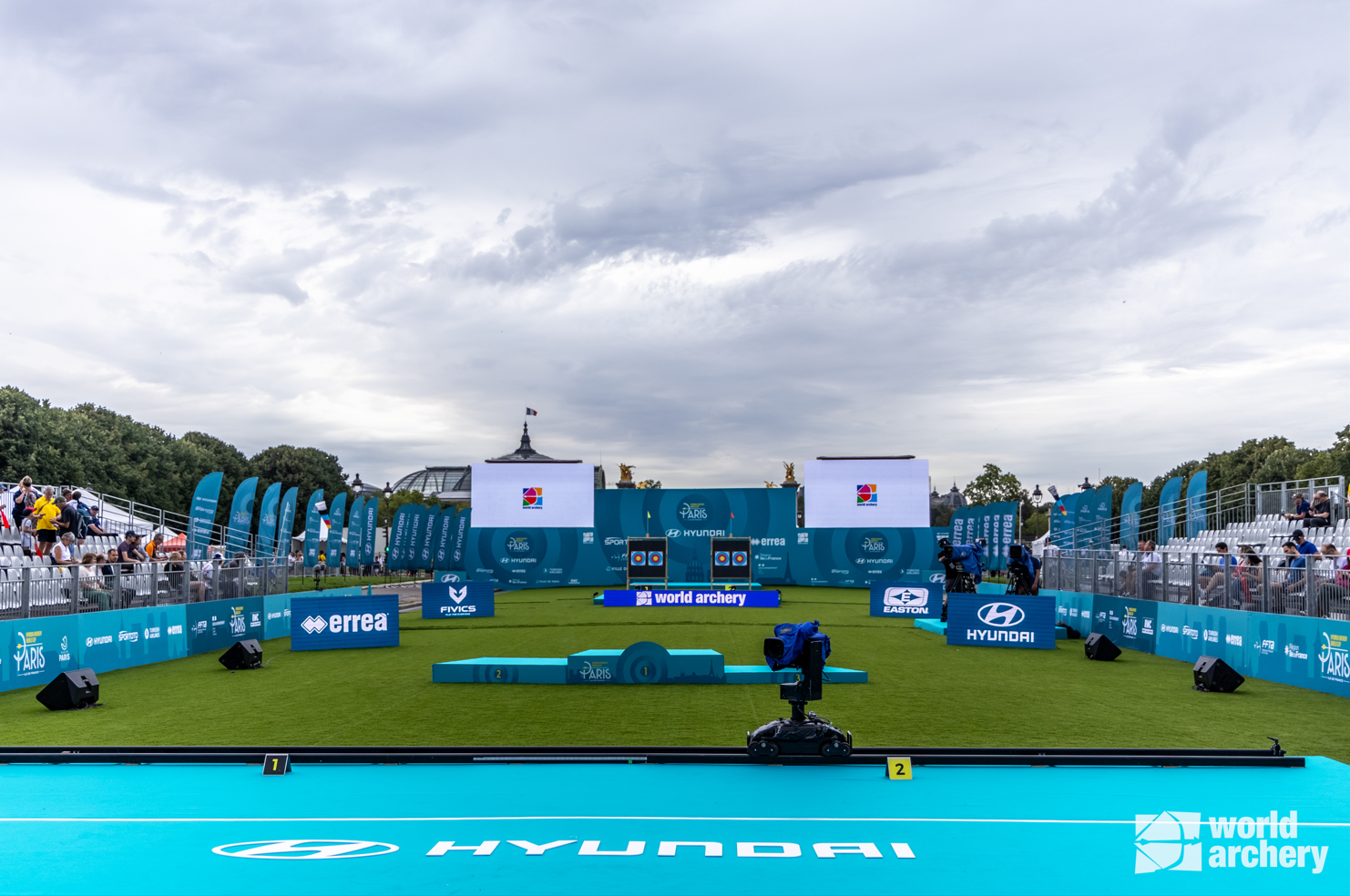The 2024 Olympic and Paralympic Games are less than two months away and athletes around the world are preparing to shoot on the world stage. We take a look at where they'll be standing when they represent GB, talk to Performance Director Tom Duggan, Olympic team coach Naomi Folkard, and Olympic squad members Tom Hall and Bryony Pitman about the effort that has gone into preparing for the event.

Naomi: It’s quite a contrast between the beautiful buildings in the background and the bright modern look of the venue. The venue will be made up of temporary structures, seating, staging and marquees, the layout of which has been thoughtfully designed to ensure the buildings can be seen clearly behind the action.
Tom H: Initial impression was hard to gauge because I know it will look very different with all the stuff that appears on an Olympic venue. Overall, it feels spacious, but at the same time fairly sheltered. Being in the middle of the city, it’s a nice balance.
Tom D: It’s clear that it is going to be an iconic Olympic and Paralympic venue, and very different to Tokyo and Rio, where the venues felt away from the hub of the Games. Archery will be in the same area as several other sports, including triathlon and road cycling.
Naomi: The size of the stands will be quite a surprise to see. We have been told that there will be 8,000 spectators in stands that are 60m long and 12m high, so it’s difficult to really imagine that before we get there. The noise from these numbers will make communication difficult during the team matches, but the shelter provided by the seating should make the conditions ideal if there’s a cross wind, although a head wind could be quite tricky with the wind swirling around the structures. 
© World Archery
Naomi: It gave us conversation starters and ideas of what we could do in training to help the athletes prepare, like noise and distraction sessions.
Tom H: Seeing the venue is useful because it means you can just start to make it feel familiar and get comfortable with the idea of shooting there. When you arrive to compete, you don't want to be wasting attention looking around and taking things in, you want to already know what to expect and be able to focus on doing the job.
Bryony: One of the most important things, in my opinion, is that it helps with visualisation and mentally preparing to compete at a Games. Knowing what you’re going into can help make it feel more familiar, so when the Games start, it’s a more comfortable environment.
Tom D: Every Games offers new and different challenges, and one of the big things we want to guard against is people thinking Paris is just like a home Games. We know from recent years that the environmental conditions in Paris at the time of the year the Games is taking place can be really challenging, perhaps similar to what was experienced in Tokyo, so we don’t want to underestimate that.
Naomi: It also helps the athletes by giving them stimulus for their imaginary training, as well as giving them some idea of what to expect and what to prepare for, so that there are fewer surprises. They know the journey from the bus to the warm-up field, and from the warm-up field to the call room and then onward to the field of play. The athletes should have left the venue feeling more motivated to work hard.
© World Archery